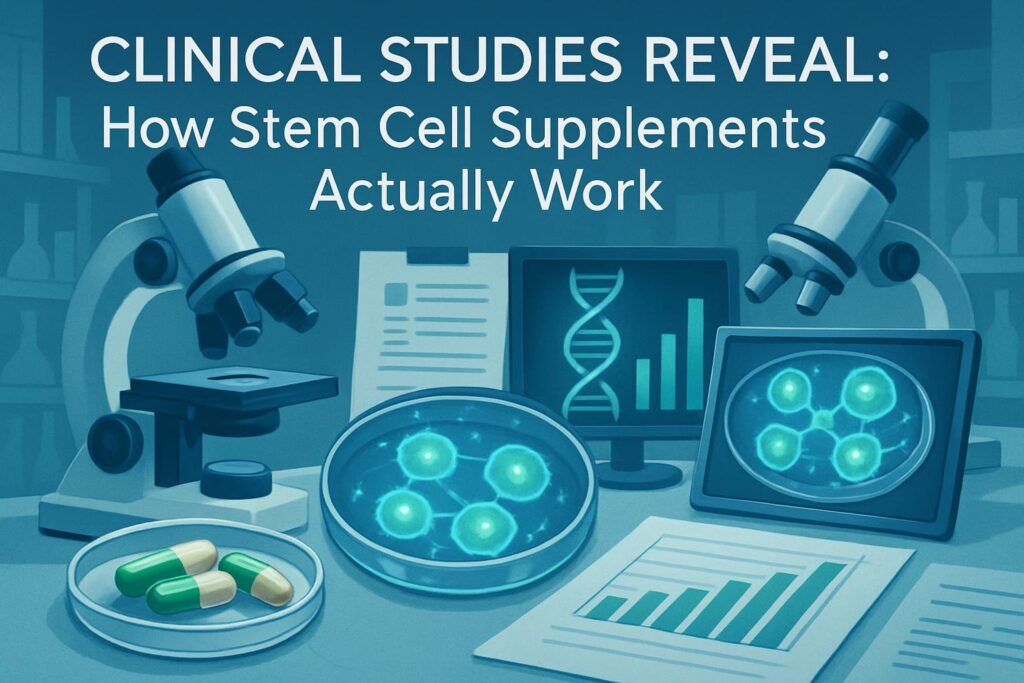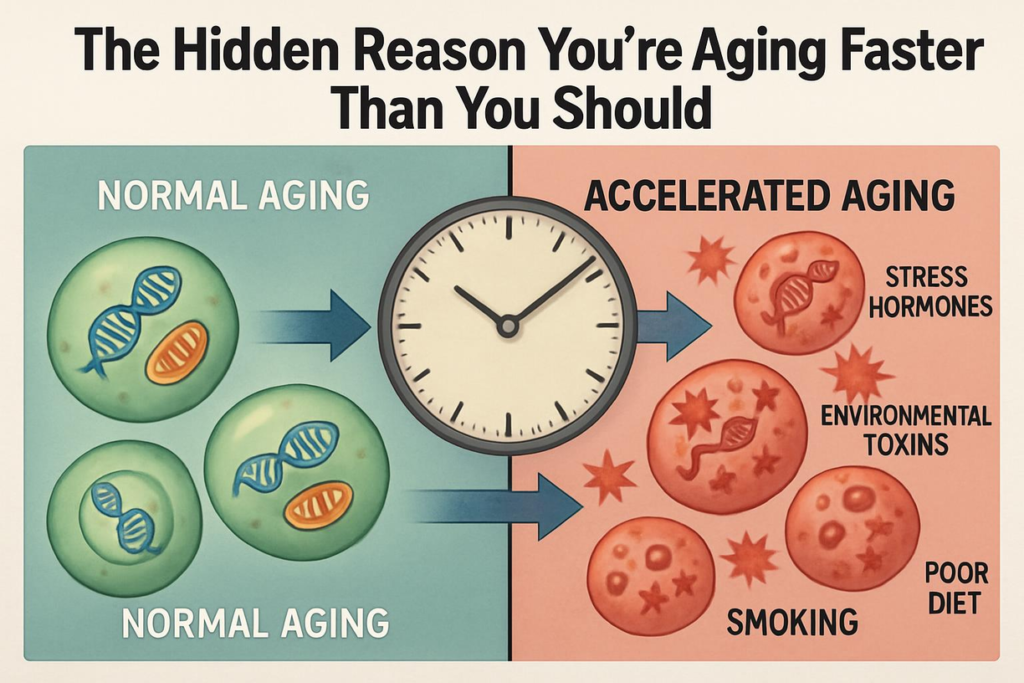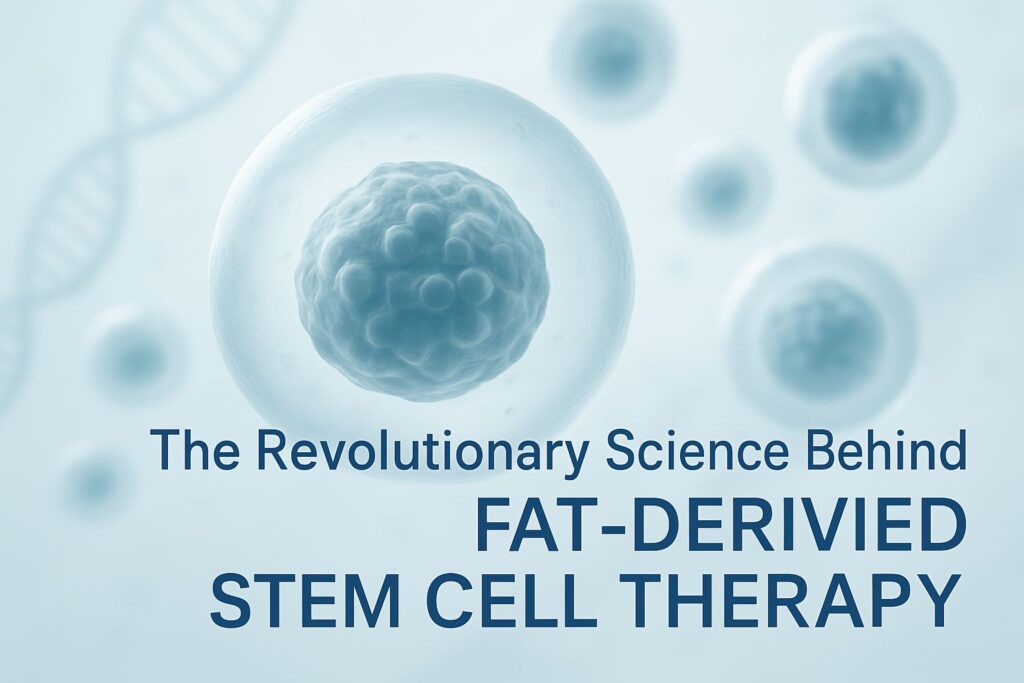Ever wondered if there’s a magic bullet for liver disease?
While magic might be off the table, the realm of modern medicine brings us something almost as spellbinding: stem cell therapy. This cutting-edge treatment option is emerging as a beacon of hope for those battling the relentless waves of liver conditions. But before we dive into the cellular deep end, let’s set the stage for what’s to come.
Liver diseases, from the sneaky silent types like non-alcoholic fatty liver disease (NAFLD) to the more overt disruptors like hepatitis and cirrhosis, affect millions worldwide, chiseling away at the quality of life and longevity.
Traditional treatments range from medication cocktails to the daunting prospect of a liver transplant. However, these approaches often come with their own set of limitations and complications, leaving many to yearn for a more innovative solution.
Enter stem cell therapy for liver failure. Picture this: cells with the superhero-like ability to transform and regenerate damaged liver tissue, offering a potentially less invasive and more sustainable solution to liver ailments.
Sounds promising, right? That’s because it is. But as with any hero’s journey, there are trials to face, mysteries to unravel, and a quest for knowledge to fulfill.
Our mission here is to guide you through the fascinating landscape of stem cell therapies for liver issues. We’ll explore the science behind the scenes, the current state of research, the promising results, and the hurdles yet to be cleared.
Whether you’re a patient seeking alternatives, a caregiver looking for hope, or simply a curious mind eager to learn, this article aims to illuminate the path of stem cell therapy as a potential game-changer in the treatment of liver conditions.
Understanding Liver Disease
The Crucial Guardian of Your Health: The Liver
The liver, a silent powerhouse nestled in the upper right quadrant of your abdomen, plays a vital role in your body’s metabolic processes—filtering blood, aiding in digestion, and neutralizing toxins. It’s like the body’s chemical processing plant; when it’s running smoothly, life is good. But when things go awry, it’s a whole different story.
When the Liver Cries for Help: Types of Liver Disease
Diseases of the liver come in various shapes and sizes, each with its own set of challenges. Here’s a brief rundown:
- Hepatitis: This inflammation of the liver is often viral, turning the body’s own tissues into battlegrounds.
- Cirrhosis: Imagine the liver slowly turning into a scarred wasteland—this is cirrhosis, often the endgame of chronic liver damage.
- Liver Cancer: A dire consequence of ongoing liver insults, where cells multiply uncontrollably.
- Non-Alcoholic Fatty Liver Disease (NAFLD): A sneak thief, silently accumulating fat in liver cells, leading to inflammation and potential cirrhosis.
The Traditional Arsenal and Its Limitations
From liver transplantation to antiviral drugs and lifestyle changes, the traditional treatment arsenal varies as widely as the diseases themselves. Yet, these treatments often come with a backpack full of caveats—limited availability, potential for rejection, and a plethora of side effects.
It’s a road fraught with bumps, and for many, the journey feels endless.
The Science of Stem Cell Therapy
Unleashing the Power Within: Stem Cells
At the heart of stem cell therapy lies a simple yet profound principle: the body’s inherent ability to heal itself. Stem cells, the body’s raw materials, are the only cells with the unique power to generate new cell types. They’re like the clay of the cellular world, moldable and capable of becoming whatever the body needs, including hepatocyte-like cells necessary for liver regeneration.
The Cellular Heroes: Types of Stem Cells in Liver Therapy
- Embryonic Stem Cells (ESCs): The universal donors of the cell world, capable of transforming into any cell type, including those critical for liver repair.
- Induced Pluripotent Stem Cells (iPSCs): Adult cells reprogrammed back into a juvenile state, ready to embark on a new cellular destiny.
- Mesenchymal Stem Cells (MSCs): Found in bone marrow, these cells are the undercover agents of stem cell therapy, offering support, modulating immune responses, and fostering regeneration.
The Mechanism of Miracle: How Stem Cells Revitalize the Liver
The magic of stem cell therapy lies in its ability to mimic nature’s repair mechanisms. Whether by directly repopulating lost liver cells, modulating the immune response to halt further damage, or secreting biochemical signals that stimulate repair, stem cells offer a multipronged approach to healing the liver.
Current Research and Developments
The journey of stem cell therapy from theoretical potential to clinical reality is paved with ongoing research, clinical trials, and real-world applications that underscore its potential to revolutionize liver disease treatment.
Real-World Applications and Success Stories
Amid the scientific studies, there are heartening stories of real patients who have experienced significant improvements in their liver diseases through stem cell therapies. These anecdotal successes not only provide hope but also help fuel further research and development in the field.
The Road Ahead: Challenges and Opportunities
While the progress in stem cell therapy for liver diseases is undeniable, the journey is far from over. Researchers face challenges such as understanding the long-term effects of stem cell treatments, optimizing cell delivery methods, and ensuring treatments are safe and effective across diverse patient populations. However, each challenge presents an opportunity for discovery and innovation, driving the field forward.
Advantages of Stem Cell Therapy for Liver Disease
Stem cell therapy heralds a new dawn in the treatment of liver diseases, offering advantages that traditional methods struggle to match. Here’s a closer look at why stem cell therapy is gaining ground as a preferred treatment option.
Potential for Regeneration Over Replacement
One of the most compelling benefits of stem cell therapy is its ability to promote the regeneration of liver tissue, offering a stark contrast to liver transplants which essentially replace the diseased organ.
This regenerative capability not only aims to restore liver function but does so in a way that is less invasive and potentially more sustainable in the long run.
Reduced Side Effects and Complications
Traditional liver disease treatments, including medication regimens and surgical interventions, often come with a laundry list of side effects and potential complications.
Stem cell therapy, by virtue of its regenerative and relatively non-invasive nature, holds the promise of minimizing these unwanted consequences, making the treatment journey less arduous for patients.
A Step Towards Personalized Medicine
Stem cell therapy stands at the forefront of personalized medicine. By utilizing cells derived from the patient’s own body or closely matched donors, treatments can be tailored to the individual’s specific condition and needs, enhancing the effectiveness of the therapy and reducing the risk of immune rejection.
Charting the Future of Liver Disease Treatment
The ongoing advancements in stem cell therapy research are not just about treating liver diseases more effectively; they’re about reimagining the future of liver disease treatment. With each breakthrough, we move closer to a world where liver disease can be managed more humanely and sustainably.
| Traditional Treatments | Stem Cell Therapy |
|---|---|
| Often invasive (e.g., liver transplants) | Less invasive, with a focus on regeneration |
| Generic, one-size-fits-all approaches | Tailored, personalized treatment plans |
| High risk of side effects and complications | Potentially lower risk of side effects |
| Limited by organ availability and rejection issues | Eliminates the need for donor organs |
Considerations and Challenges
The path to integrating stem cell therapy as a standard treatment for liver diseases is fraught with scientific, ethical, and logistical challenges. Addressing these concerns is pivotal for the advancement and acceptance of stem cell therapy within the medical community and among patients.
Navigating Safety and Ethical Concerns
The safety of stem cell therapy, particularly regarding long-term effects and the potential for unintended consequences, remains a paramount concern. Rigorous clinical trials and regulatory oversight are crucial to ensure that treatments not only are effective but also do not pose undue risk to patients.
Ethical considerations, especially with certain types of stem cells, have historically sparked debate. However, the focus on mesenchymal stem cells and induced pluripotent stem cells has alleviated many ethical dilemmas, shifting the conversation towards ensuring ethical sourcing and application.
Regulatory Landscape and Approval Processes
The path to regulatory approval for new treatments is often long and winding, dotted with stringent requirements and extensive validation processes.
Stem cell therapies are no exception, and navigating this landscape is a significant challenge for researchers and pharmaceutical companies.
The variability in regulatory frameworks across different countries further complicates this picture, affecting the accessibility and availability of treatments.
Accessibility and Cost Considerations
The question of who can access stem cell therapy and at what cost is equally pressing. Currently, the high cost of developing, approving, and administering these therapies puts them out of reach for many patients.
Efforts to make stem cell therapy more affordable and accessible are ongoing and are crucial for its success as a viable treatment option.
Choosing the Right Treatment Facility
For patients considering stem cell therapy, selecting the right facility is a critical decision. Factors such as the facility’s accreditation, the expertise of the medical staff, and the specific treatments offered must be carefully evaluated to ensure the best possible outcome.
Overcoming Challenges: A Collaborative Effort
The challenges facing stem cell therapy for liver disease are significant but not insurmountable. Advancements in research, collaborative international efforts, and ongoing dialogue between the medical community, regulators, and patients are key to overcoming these hurdles.
As the field of regenerative medicine continues to evolve, so too will the solutions to these challenges, paving the way for stem cell therapies to become a cornerstone of liver disease treatment.
| Challenge | Strategy for Overcoming |
|---|---|
| Safety concerns | Rigorous clinical trials and long-term follow-up studies |
| Ethical considerations | Focusing on ethically sourced stem cells |
| Regulatory hurdles | International collaboration and standardized protocols |
| Accessibility and cost | Innovation in treatment methods and funding models |
The Future of Stem Cell Therapy in Liver Disease
The horizon of stem cell therapy for liver disease is vast and promising, illuminated by the continuous progress in scientific research, technological advancements, and an ever-deepening understanding of liver pathology and stem cell biology.
Emerging Trends and Ongoing Research
Innovative trends and research are shaping the future of stem cell therapy for liver disease:
- Precision Medicine: Tailoring stem cell therapy to the individual’s genetic makeup, lifestyle, and disease specifics is becoming increasingly feasible, promising more effective and personalized treatments.
- Combination Therapies: Combining stem cell therapy with other treatments, such as gene therapy or novel pharmaceuticals, could enhance treatment efficacy and outcomes.
- Advanced Bioengineering: The development of bioartificial liver devices and the use of 3D bioprinting to create liver tissue for transplantation are on the cutting edge of regenerative medicine, potentially revolutionizing liver disease treatment.
Potential for New Therapies and Treatments
The exploration of different stem cell types, such as umbilical cord-derived mesenchymal stem cells and adipose tissue-derived stem cells, opens new avenues for therapy. Moreover, advancements in understanding the mechanisms behind stem cell differentiation and integration into liver tissue offer exciting prospects for developing more effective and targeted therapies.
The Role of Technology and Innovation
Technological innovations, particularly in gene editing and tissue engineering, are set to play a pivotal role in advancing stem cell therapy.
Tools like CRISPR-Cas9 offer the potential to correct genetic defects that contribute to liver diseases, while advancements in imaging and monitoring technologies enhance the precision and safety of stem cell therapies.
Conclusion
The exploration of stem cell therapy for liver disease has taken us from the basics of liver function and the impact of liver diseases to the cutting-edge of regenerative medicine. We’ve delved into the science behind stem cells, celebrated the advancements in research and development, navigated through the challenges and considerations, and envisioned a future bright with possibilities.
A Beacon of Hope
Stem cell therapy represents more than just a new treatment option. It symbolizes a paradigm shift in approaching liver diseases—a shift from managing symptoms and damage to promoting healing and regeneration.
The promise of stem cells to potentially reverse liver disease, reduce the need for liver transplants, and improve patients’ quality of life shines as a beacon of hope.
The Path Forward
For those considering stem cell therapy for liver disease, the journey is both personal and shared. It’s about making informed decisions, understanding the risks and benefits, and considering the broader implications of choosing such treatment. Here are a few steps to consider:
- Stay Informed: The field of stem cell therapy is rapidly evolving. Keeping abreast of the latest research and clinical trial results can help patients and their families make informed decisions.
- Consult Healthcare Providers: Engaging in open, informed discussions with healthcare providers about the suitability of stem cell therapy for individual cases is crucial.
- Consider the Broader Context: The decision to pursue stem cell therapy goes beyond personal health; it involves ethical considerations, regulatory compliance, and the potential impact on future patients and treatments.
Final Thoughts
The journey of stem cell therapy for liver disease is a testament to the human spirit’s resilience and the relentless pursuit of healing and innovation. As we stand on the threshold of new discoveries and therapies, the dialogue between patients, healthcare providers, researchers, and policymakers must continue to ensure that the future of liver disease treatment is not only effective and safe but also accessible and equitable.
In the end, the story of stem cell therapy for liver disease is still being written. With each advancement, each challenge overcome, and each life touched, we move closer to a world where the burden of liver disease is significantly lightened, offering a new lease on life to those affected.



